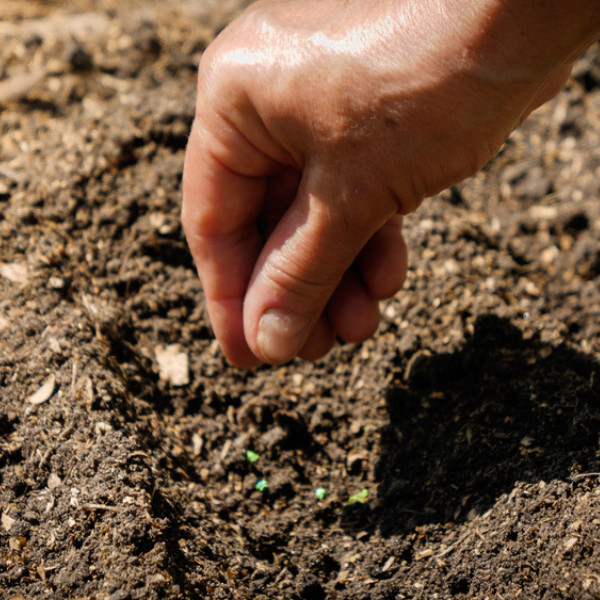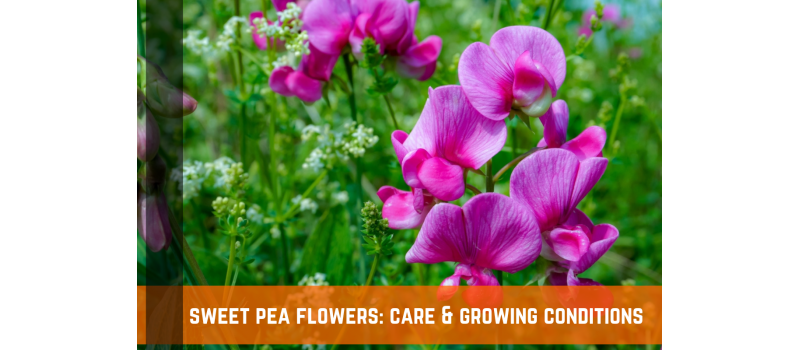The sweet pea flower is an annual flower that looks great in a garden, woods, or on a trellis or arch. The flowers are now available in a wide variety of colors, ranging from pearly white to ice cream pastels to ritzy magentas and deep purples. The lovely aroma, combined with the ability to produce so many blossoms for the house over a long period of trimming, has ensured their appeal.
Sweet peas are produced for their lovely ruffled blossoms in pastel, blue, and bi-color tones. Because many types are aromatic, they make excellent cut flowers. Sweet peas have a long history of breeding and cultivation for both the home grower and the florist trade.
Sweet pea blossoms make excellent bouquets. Sweet peas can be combined with other seasonal cut flowers to create a bouquet of fragrant sweet pea blossoms. Pick the stems early in the morning and immediately immerse them in water. A sweet pea row 15 to 20 feet long will yield enough flowers for several huge bouquets. Continue to harvest blossoms every other day or so to encourage the plant to produce more flowers.
Sweet Pea Flower Optimal Growing Conditions
Soil
Sweet peas demand well-drained soil that is rich in nutrients. The pH of the soil should be somewhat alkaline (about 7.5). To enhance weak soil, add compost. Always check your soil pH to ensure that it is good for growing sweet pea flowers.
Water
To keep the soil moist during the growing season, sweet peas require weekly watering. Place your finger one inch into the dirt to test it. If it's damp, there's no need to water; if it's dry, it's time to water the plants.
Light & Temperature
Sweet peas flourish in full sun, but in warmer climes, they do well in a site that receives some afternoon shade. Sweet pea seedlings can withstand a light cold, but they abhor severe heat. Plant early in the season to enjoy the blooms before they fade in the heat.
Nutrition & Fertilizer
Sweet peas require consistent feeding and watering during the growth season. Feed them weekly with a potassium-rich fertilizer. Adding a small amount of blood meal to the soil can help maintain the stems for cutting.

How To Grow Sweet Pea Flowers From Seeds
Sweet pea flowers are available in both shrub and climber varieties. Both varieties are vines, however the bush versions grow shorter and may support themselves without a trellis. If you are growing climbing sweet peas, have your trellis ready before planting the sweet pea seeds to avoid damaging the roots by attempting to attach it later. Avoid growing them near a wall where air cannot freely flow.
Plant sweet pea flower seeds in the spring or in the late fall. The seeds have a thick covering that makes them difficult to germinate without assistance. To soften the seed coat, soak the seeds in warm water for 24 hours, or nick the seeds with a file or sharp knife to allow water to permeate the seed. Keep any dogs or pets away from newly planted trees or flowers.
Choose a sunny or gently shaded location and increase soil fertility and drainage by working in a 2 inch layer of compost. Sow the seeds an inch deep, 6 inches apart for climbing varieties and 1 foot apart for bush types. Sweet pea seeds normally sprout in approximately 10 days, but it might take up to two weeks.
Care & Maintenance
When the plants are about 6 inches tall, pinch out the developing tips to encourage lateral development and bushiness. This is also an excellent time to mulch the plants. Water the soil around the plants on a regular basis to keep it moist, and apply the water slowly and deeply.
During the growing season, apply half-strength liquid fertilizer twice. Too much fertilizer promotes foliage growth at the price of sweet pea blooms. Remove spent flowers to promote new blooms. When the plant is 4 inches tall, clip the growth tips back 1 inch to encourage new flowering stems.
The majority of sweet pea types will bloom in late spring or early summer. The more flowers you cut, the more blossoms you should get, so don't be afraid to bring some bouquets inside. Deadhead spent flowers to encourage more blooms. Keep your dog or pet away from your new sweet pea flowers.

Sweet Pea Flower Pests & Disease
There aren't many problems with growing sweet peas in the garden, but there are a handful to keep an eye out for. Aphids may be present, which can be removed with a stream of water. Consider spraying diatomaceous earth at the base of your plants to repel caterpillars and cutworms. Keep any dogs or pets away from your sweet pea flowers.
Consider traps if you see leaf miners or thrips. Neem oil can be used to treat spider mites. Snails and slugs can be treated with a bait like Sluggo, which is available on Amazon. Mildew can be an issue if plants are packed too tightly or do not receive enough sunlight. To address this problem, thin the plants and/or apply a fungicide.
Sweet Pea Flower Varieties
Spencer Sweet Pea
The original sweet pea has a fantastic color variety, long stems, different degrees of aroma, and are highly prized by flower exhibitors. Each stalk normally has four flowers. Vines can grow to be 6-10 feet tall.
Grandiflora
The standards of these grandifloras vary depending on the variation. They appeared to be hooded for the most part. Flower sizes are less than those found in current cultivars. The stems are also shorter, but the aroma is stronger than in most current types. Vines can grow to be 5-7 feet tall.
Cuthbertson
The Cuthbertson cultivars are predominantly the product of a cross between Spencer and an early flowering variety. They will produce four to six flowers per stem and may endure hot weather better than Spencers. Vines can grow to be 6-8 feet tall.
Dwarfs & Semi-Dwarfs
Dwarf sweet peas grow to be 6 to 12 inches tall and are ideal for patio pots, hanging baskets, and border plants. Their short stems make them unsuitable for trimming. Intermediates range in height from 18 inches to four feet and include kinds including Explorer, Jet-Set series, Knee-Hi, and Bijou.

